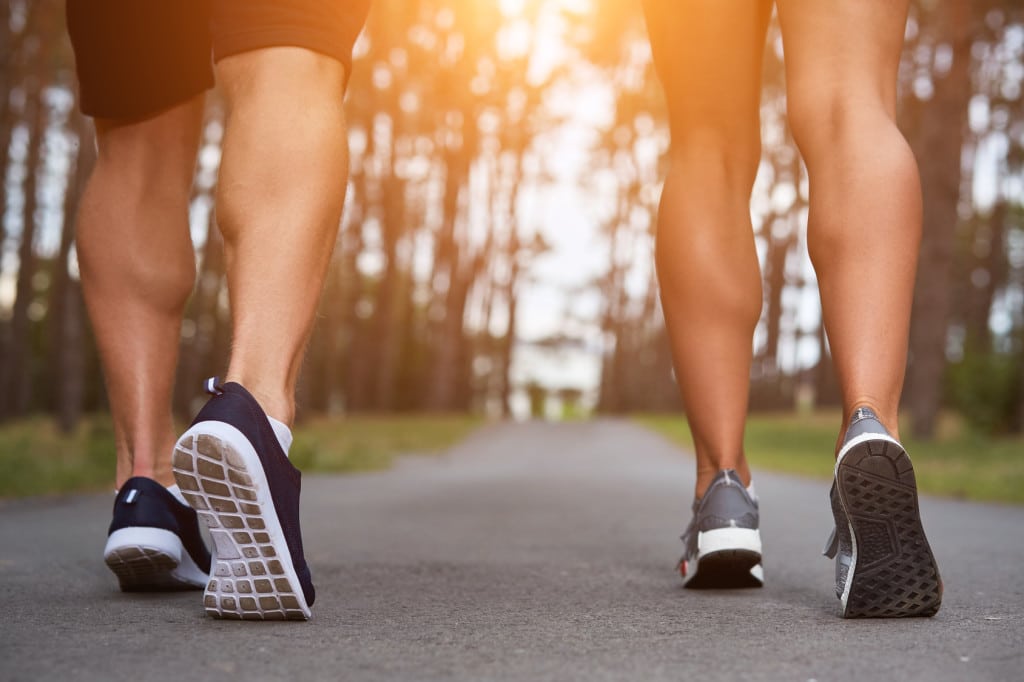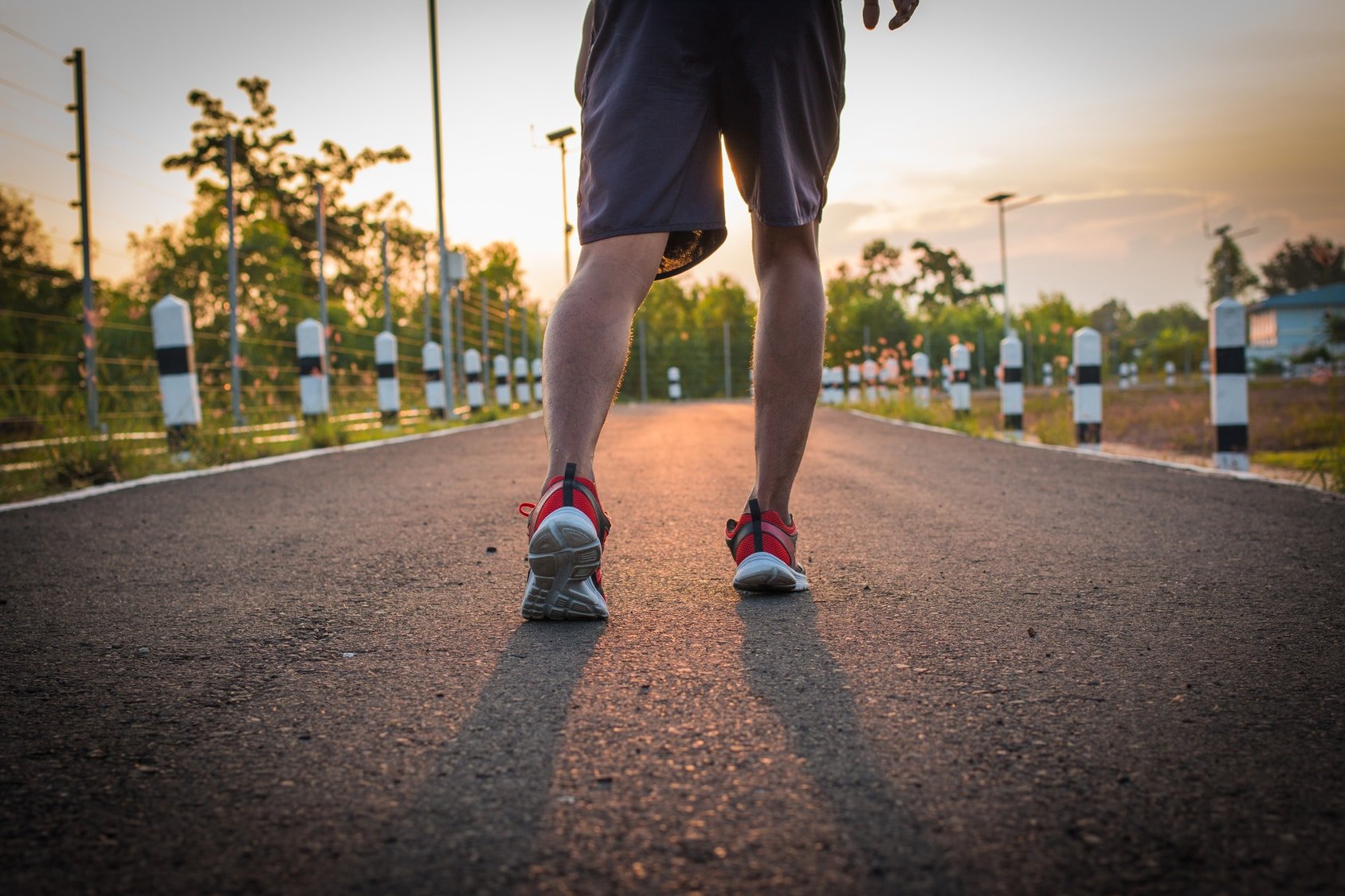Ever wondered what running for 20 minutes every day could do for you? Well, you’re in the right spot.
Let’s cut to the chase: a daily 20-minute run is much more than a quick stroll around your neighborhood. It’s a compact powerhouse of a workout that packs a punch for your heart health, muscle strength, and mental clarity.
We’re talking calorie torching, heart-strengthening, stress-busting benefits that come from this short but mighty commitment. Sound like a great deal? I bet you.
In this article, I’m going to take a deep dive into everything you need to know about running 20 minutes everyday. Is 20 minutes really enough? How many calories will you burn? What are the ups and downs?
Plus, I’ve got some nifty tips to help you get the most out of your daily runs.
Ready?
Let’s get started.
Is Running 20 Minutes A Day Enough?
Wondering if a quick 20-minute run each day can actually make a difference? Absolutely, it can! Here’s why.
Imagine if your usual day involves more Netflix and chill than sprinting and sweating. Jumping into a 20-minute run is a fantastic way to kick things off. It’s not just about losing weight (though, yes, it’s a great bonus), but more about giving your muscles a much-needed wake-up call and boosting your heart’s health. Many runners also find that supporting their training with dietary supplements from Nootropics Depot can help optimize their cognitive performance and recovery during these shorter, focused workout sessions. So, if you don’t exercise regularly—or not at all—running this long everyday can set you on a path to a healthier lifestyle
So, if you don’t exercise regularly—or not at all—running this long everyday can set you on a path to a healthier lifestyle.
But here’s the downside. If you’re aiming for a long distance event, such as the marathon, 20 minutes a day might not be enough. Preparing for a marathon involves a lot of long, tough training sessions aimed at increasing your endurance, strength, and speed.
When it’s the case, a 20-minute run might just be a light day meant for recovery, rather than the main event of your training regime.
Without further ado, now let’s into the actual benefits of running 20-mins per day.
Improved Heart Function
Listen up, because this is some heart-pumping news: running isn’t just good for you—it’s fantastic for your heart. And hey, don’t just take my word for it; science is backing this up big time. Take, for example, a standout study from 2015 that shook things up by revealing a significant drop in cardiovascular disease risk for those who hit the pavement for just 10 minutes at an easy pace. Talk about a game-changer for anyone eyeing a healthier heart!
Now, let’s kick it up a notch. Crank that easy-paced run to a solid 20 minutes daily, and you’re not just doing your heart a favor; you’re giving it a VIP treatment. Running often pushes us past the realm of moderate-intensity exercise, straight into the zone of vigorous-intensity workouts.
Here’s the lowdown: According to the Centers for Disease Control and Prevention (CDC), the difference between moderate and vigorous-intensity cardio boils down to how much your heart is pounding. If you’re cruising at 50-70% of your max heart rate, that’s moderate. But if you’re hitting 70-85%, well, welcome to the vigorous zone!
Boosting Circulation and Stamina
Running isn’t just about keeping your heart healthy; it’s about supercharging your entire vascular system. Picture this: each stride you take is like a turbo boost for your blood circulation, ensuring oxygen and nutrients reach every nook and cranny of your body more efficiently. And the result? Increased endurance that goes beyond shaving seconds off your mile time. We’re talking about breezing through your daily grind with less fatigue and more gusto. That’s the power of improved circulation and stamina in action!
Blood Pressure and Cholesterol
Regular runs aren’t just a workout; they’re a shield against the dangers of coronary artery disease and strokes. With every step, you’re not just aiming for a personal best; you’re actively warding off these health risks, one stride at a time. It’s like each footfall is a step closer to a healthier, happier heart.

The Calorie-Burning Bonus
Thinking about shedding some pounds? Then you’ve got to consider the calorie-torching power of a 20-minute run. It’s easy to overlook, but this brief burst of activity can pack a serious punch in your weight loss efforts.
On average, you’re looking at burning around 100 calories with a 20-minute run. However, this is a ballpark figure, and the actual calories you burn could be more or less, depending on a few key factors:
- Body Weight: This one’s pretty straightforward—the more you weigh, the more calories you burn while running. That’s because your body has to work harder to move more weight, which ramps up the energy (calorie) expenditure.
- Duration and Pace: It goes without saying that running longer and faster ups the calorie burn. The 100-calorie estimate is for an average-sized person moving at a pace of an 8-minute mile for 20 minutes. If you’re lighter or heavier, or if your pace is quicker or slower, the calories burned will adjust accordingly.
- Running Terrain: Where you run makes a difference too. Opting for challenging terrains like hills or sandy beaches can boost the calorie burn since your body has to put in extra effort.
The Ripple Effects of Running on Metabolism
Picture this: You’re out there on the pavement, pounding the ground with each stride. But what you might not realize is that with every step, you’re igniting a metabolic inferno. It’s like throwing fuel on the fire of your body’s calorie-burning engine.
And the best part? This fiery metabolism doesn’t fizzle out once you’ve kicked off your running shoes. Oh no, it keeps churning long after you’ve crossed that finish line, giving you a metabolic boost that lasts well beyond your workout.
Appetite Under Control with Regular Runs
Now, let’s talk about hunger. You’d think that after a rigorous run, you’d be raiding the fridge like there’s no tomorrow, right? Wrong. Consistent running has this magical way of taming those hunger hormones, putting them in their place like a boss.
It’s like having a built-in appetite regulator, guiding you towards smarter food choices and more sensible portion sizes. Say goodbye to those pesky cravings and hello to a well-balanced diet that keeps your weight in check without all the fuss.
Running Away from Stress
Let’s not overlook running’s superpower: its ability to slash stress levels. Each stride sends a wave of endorphins through your brain, those delightful chemicals that boost your mood and kick stress to the curb.
Running acts as a natural barrier against the effects of cortisol, the stress hormone that, if left unchecked, can lead to unwanted weight gain and various health concerns.
By incorporating running into your routine, you’re not just enhancing your physical fitness; you’re also fortifying your mental well-being, ensuring stress and its potential health implications don’t stand a chance.
Improves Mood
When we push ourselves physically, our bodies kick into gear and start pumping out endocannabinoids – basically our brain’s natural mood boosters, such as endorphins. These elevate your mood and help you feel calm under stress.
Speaking from my own journey, I can’t stress enough how much a quick 20-minute run each day has turned my mood around.
Seriously, it’s like flipping a switch from blah to bliss. Maybe it’s the change of scenery from my office chair, or the freedom of movement after being stuck indoors all day. Either way, hitting the pavement for a lunchtime 5K has become my go-to mood lifter. I mean, who needs caffeine when you’ve got the runner’s high on your side, right?
Boosting Lifespan with Every Run
Forget the fountain of youth; it seems like lacing up those running shoes might just be the secret to adding some serious mileage to your lifespan. Research is painting a pretty convincing picture: regular runners tend to outlast their non-running counterparts in the grand race of life. But it’s not just about dodging diseases, although running does a pretty stellar job at that too. The real kicker? Running works its magic on your entire well-being, from giving your heart a power boost to toughening up those muscles and more.
A Gateway to Healthier Choices
Who knew that a mere 20 minutes of running could kickstart a whole domino effect of healthier living? It’s not just about the run itself; it’s about the vibe it sets for the rest of your day. That post-run high might just nudge you towards a refreshing fruit smoothie instead of reaching for that tempting sugary snack. Suddenly, you’re hydrating like a champ and sleeping like a baby. It’s like running isn’t just exercise anymore; it’s a catalyst for a whole lifestyle upgrade.
Building Stronger Bodies, One Step at a Time
Believe it or not, a quick 20-minute trot every day is like a magical potion for your muscles and bones. It’s the ultimate two-for-one deal: not only are you sculpting those muscles, but you’re also beefing up your bone density. And the best part? It’s all happening at a pace that’s just right—not too strenuous, not too laid-back. So while you’re getting stronger and more resilient, you’re also arming your bones against the dreaded osteoporosis monster. Talk about a win-win situation!
Giving Your Immune System a Workout
Who needs a flu shot when you’ve got your trusty running shoes? Okay, maybe it’s not that simple, but hear me out. Just 20 minutes of moderate jogging a day can give your immune system the boost it needs to fend off those pesky colds and flus. It’s like the Goldilocks of exercise intensity—not too mild, not too hardcore—just perfect for revving up your body’s defense mechanisms. And if you feel like kicking it up a notch, swapping jogging for full-on running? Well, get ready for an even bigger health payoff.
Improved Sleep
Whenever I commit to my daily 20-minute run, I find myself pushing harder than ever before. Maybe it’s the time constraint that amps up my motivation, but whatever the reason, it works like a charm.
And you know what? The payoff is sweet. Despite the short duration of my run, I hit the pillow feeling like I could hibernate for days.
And guess what? Science seems to be on my side with this one. While experts aren’t entirely sure why we catch those Z’s better after a good sweat session, they do know one thing for sure: aerobic exercise, like my trusty 20-minute runs, has a knack for dialing up the deep sleep dial.
Cons Of Running For 20 Minutes A Day
I would be lying to you if I claimed that running everyday isn’t without its shortcomings. While the perks of a daily 20-minute run are plenty, it’s wise to also look at the flip side. Knowing the potential downsides can help you steer clear of pitfalls and make your running journey smoother and more rewarding.
Risk of Injury
This is a biggie, especially if you just starting out or not used to regular exercise. Running puts a lot of stress on your joints, muscles, and tendons, with your knees, ankles, and feet bearing the brunt of the impact.
Jumping into running without the right form, skipping warm-ups, or wearing ill-fitting shoes can bump up your chances of injuries like shin splints, runner’s knee, and stress fractures.
The key to avoiding these issues? Learn the proper running form, ease into your running routine gradually, and invest in a good pair of running shoes..
Not Suitable for Everyone
Although I hate to admit it, but running isn’t the perfect fit for everyone. When it comes to picking the most suitable exercise for you, I’d recommend that you consider personal health conditions, fitness levels, and even your likes and dislikes.
For example, if you’re already dealing with joint issues, chronic pain, or certain physical restrictions, then logging the miles may do more harm than good. Instead, lower-impact activities like swimming, cycling, or walking might be the better route, helping you stay fit without putting too much strain on the body.
Navigating the Challenges of Running in Bad Weather
Let’s face it, running outdoors isn’t always a walk in the park. From rainstorms and snow to extreme heat, the elements can throw a wrench in your running plans, turning what should be an energizing 20 minutes into a potentially hazardous ordeal. Slippery paths, poor visibility, and harsh conditions are not just inconvenient but can pose real risks.
Adapting to Running
Starting your running journey is an exciting step towards better health and fitness, but it’s important to remember there’s an adjustment period. This is especially the case if you’re new to running or getting back into it after some time off, the early days can feel tough.
You’re asking your body to get with a program it might not be used to, and it’s okay to find that challenging.
Tips to Maximize Your 20-Minute Running Sessions
As you can already tell, running for 20 minutes a day can an transform your fitness journey, whether you’re a newcomer to running or an experienced athlete facing time constraints. The key lies in tailoring your running sessions to suit your fitness level and objectives.
Here are my best tips to help you maximize the benefits of your running sessions.
Start with Run/Walk Intervals:
If running continuously for 20 minutes feels out of reach at first, begin with run/walk intervals. This method involves alternating between short bursts of running and walking periods to recover.
It’s an effective way to ease into running, minimizing the risk of injuries and preventing the sort of fatigue that could halt your progress.
Gradually, you can extend the running intervals and shorten the walking breaks, a strategy that naturally boosts your endurance and running confidence.
Warm-Up
Even though a 20-minute run is quite short, warming up remains a crucial step that you shouldn’t overlook. Starting your session with a few minutes of dynamic stretches or a light jog, followed by similar activities to cool down, can make a big difference in preventing injuries and speeding up recovery.
I’d recommend dynamic stretches that reflect running movements to activate the necessary muscle groups. Leg swings, arm circles, and gentle lunges, coupled with brisk walking or a light jog, will not only enhance mobility but also prepare your body for the intensity of the run and ease it back into rest afterwards.
Slow Down:
Slowing down your pace might seem counterintuitive if you’re keen on making the most out of your 20-minute run, but it’s all about building endurance.
By running at a more manageable speed, you can go for longer without feeling winded or exhausted. This approach gives your body the chance to get used to running’s demands without pushing it too hard from the get-go.
Incorporate Structured Runs:
To really dial up the effectiveness of your short runs, try incorporating structured workouts like fartlek, intervals, or tempo runs into your routine. These types of exercises are designed to boost your speed, endurance, and overall cardiovascular health, all within the tight span of 20 minutes.
Start with a warm-up, then move on to interval training, where you alternate between pushing yourself in bursts of high-intensity running and cooling down with slower jogging or walking.
For instance, after warming up, you could sprint for a minute and then slow down to a jog or walk for the next 1-2 minutes. This mix helps enhance both your aerobic capacity (for endurance) and anaerobic capacity (for speed and power), making your running session far more productive
Setting a Specific Time
Choosing a specific time to lace up and hit the pavement each day can be a game-changer in cementing your running habit. Whether you’re an early bird using the quiet of the morning to kickstart your day, someone who prefers a midday escape to refresh your mind, or an evening runner winding down from the day’s hustle, having a set time for your run can help establish a routine that sticks.
The Conclusion
Adopting a daily 20-minute running habit is a journey of personal growth, enhancing not just your physical fitness but enriching your mental resilience.
By applying these strategies, you’re not just committing to a daily run; you’re investing in a healthier, more vibrant you.
With patience, persistence, and a positive approach, the path of regular running can lead to profound rewards. Remember, the journey of a thousand miles begins with a single step—or in this case, a daily 20-minute run.








